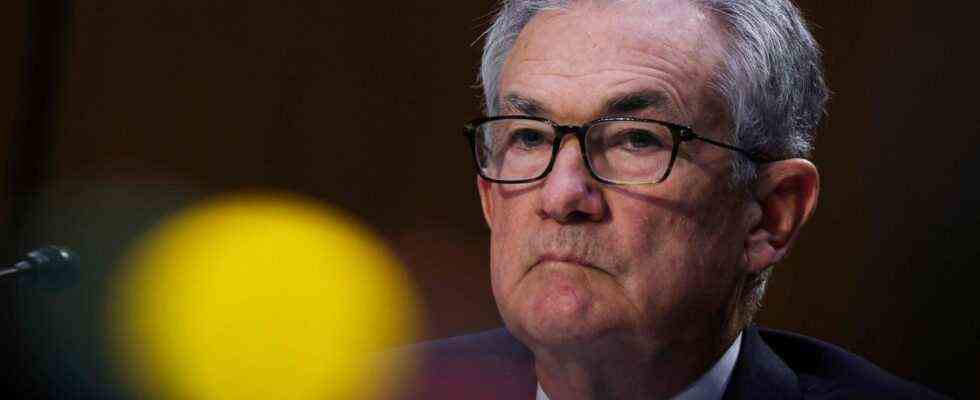Status: 06.01.2022 10:22 a.m.
In December, the US Federal Reserve announced the exit from its loose monetary policy. This could happen even faster than generally expected, as the minutes of the meeting show. The financial markets reacted immediately to this prospect.
The Federal Reserve (Fed) is preparing the markets for an even faster exit from the loose monetary policy. The members of the monetary policy committee found that the inflation trend was higher and more persistent than previously assumed, according to the minutes (minutes) of the meeting of the US Federal Reserve from December 14th to 15th, published yesterday evening.
Given the development of the economy, the labor market and inflation, a faster rate hike may be justified than previously expected. In addition, some members believe that the Fed should start reducing the total assets shortly after the first increase. Due to the extensive bond purchases, this had recently swelled to around $ 8.8 trillion.
More than three rate hikes this year?
At the last meeting of the year in December, the Fed reacted to the high inflation and decided to quickly move away from crisis mode. In contrast to the European Central Bank (ECB), it wants to get out of its extremely loose monetary policy. On the one hand, the billion dollar bond purchases to support the economy were scaled back more quickly. From mid-January, the rate of reduction is to be doubled to $ 30 billion a month. The purchase program is therefore expected to expire in March.
On the other hand, earlier and more rapid interest rate hikes were promised. Three rate hikes are expected in 2022. This means that the key monetary policy rate at the end of the current year could be in a range of 0.75 to 1.0 percent. It is currently in the range from zero to 0.25 percent. In the meantime, the Fed-Watch-Tool of the stock exchange operator CME estimates the probability at over 70 percent that the central bank will already start to raise the key interest rate in March.
The tone of the minutes suggests that the central bank will start tightening its monetary policy more quickly and possibly step up this course, commented Kim Rupert, an analyst with Action Economics. “They are very concerned that inflation is spiraling out of control.” In addition, the central bank balance sheet was discussed in more detail at the meeting than she expected. The market will thus be in the mood for possibly four interest rate hikes this year. Dave Donabedian, chief investment strategist at CIBC Private Wealth, made a similar statement. The Fed minutes would have made it clear that there would be more than three rate hikes and one downsizing of the balance sheet on the table in 2022, he said.
Inflation at its highest for almost 40 years
US inflation climbed to 6.8 percent in November. That is the highest value since June 1982. Delivery problems resulting from the Corona crisis, material bottlenecks and downright exploding energy costs have recently driven the rate of inflation upwards. The Fed is paying particular attention to consumer personal spending when it comes to inflation. Food and energy costs are not taken into account. However, this annual inflation rate (PCE core rate) was also 4.7 percent in November. That’s still more than double the Fed’s target of two percent.
The central bank had long insisted that rising prices were only a temporary development. The monetary authorities now seem to have finally moved away from this. The minutes also show that they consider the situation in the labor market to be very tense. Reference was made to almost record high numbers of layoffs and vacancies as well as an increase in wages. Many Fed members at the meeting suggested that full employment would be achieved quickly if developments continued.
According to the members, the spread of the Omikron variant of the coronavirus should not endanger the economic recovery path. However, delivery bottlenecks could last longer. This may have an impact on the inflation outlook. In December, the Omikron variant was not as widespread in the USA as it is now.
Stock markets under pressure
The details from the December minutes caused the prices on the US stock exchanges to slide yesterday. The leading index Dow Jones, which had risen to a record high of just under 37,000 points before the minutes were published, closed 1.07 percent weaker. The S&P 500, which had reached a new high on Tuesday, also fell by 1.94 percent to 4700.58 points. At the same time, yields rose on the US bond market and the US dollar also rose.
Fears of higher interest rates weighed primarily on technology stocks. The technology-heavy Nasdaq 100 fell by more than three percent. In phases of rising interest rates, companies are often reluctant to invest in IT and software. In addition, the shares of tech companies that are considered to be high-growth have benefited in particular from the central bank’s policy of cheap money in recent years. Many observers now consider them to be highly valued and accordingly susceptible to major course corrections. The shares of the Google group Alphabet, the Facebook parent company Meta and the software group Microsoft lost between 3.7 and 4.6 percent.
Interest concerns are also dampening investor sentiment on the Frankfurt Stock Exchange. The DAX lost 1.2 percent to 16,073 points in the first few minutes of trading in the morning. “The shares are falling sharply, led by Techs,” said Commerzbank. The trading house Oanda even spoke of an “implosion of tech stocks”.
ARD stock exchange: US central bank worries about high inflation
Dorothee Holz, HR, 6.1.2022 10:05 a.m.

